How AI Tracks Irrigation Performance in Real Time
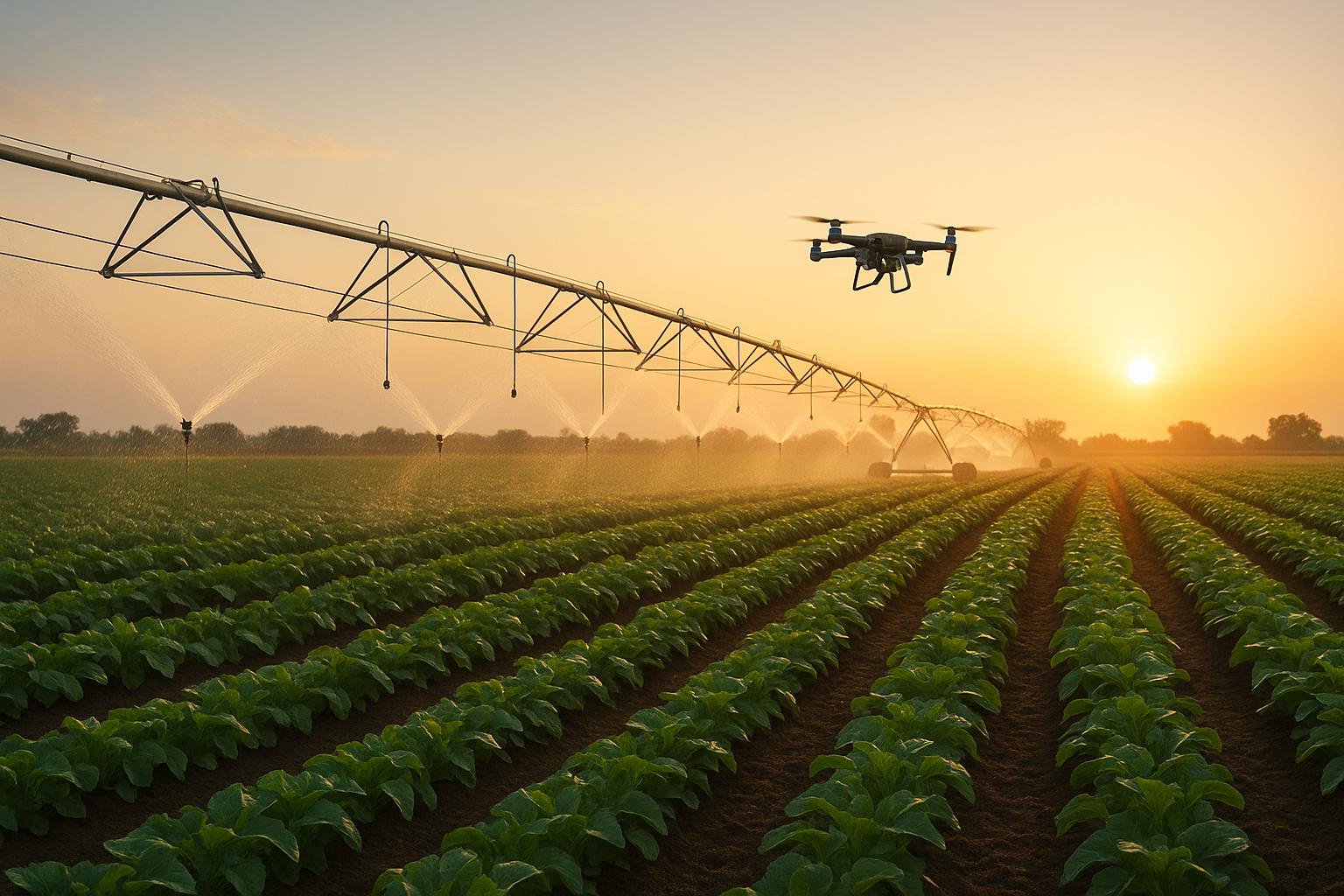
Efficient water use is a critical challenge in agriculture, with farming consuming nearly 70% of global freshwater. AI-powered irrigation systems solve this by using real-time data to optimize water distribution. These systems monitor soil moisture, weather conditions, and plant health, adjusting water delivery dynamically instead of relying on fixed schedules. The result? Up to 50% less water usage and 30% higher crop yields.
Key Features of AI Irrigation:
- Soil Moisture Sensors: Measure water levels at different depths for precise hydration.
- Weather Data Integration: Predict irrigation needs using real-time and forecasted weather data.
- Automated Controls: Adjust water flow instantly based on changing conditions.
Benefits:
- Water Conservation: Saves up to 50% of water compared to older methods.
- Improved Crop Health: Maintains optimal soil moisture, reducing plant stress.
- Cost Savings: Cuts labor and energy costs by automating irrigation processes.
AI systems also detect issues like leaks early and provide real-time performance monitoring through intuitive dashboards. With these advancements, AI irrigation is reshaping water management for farms and gardens.
AI Agents for Precision Irrigation Systems

Core Components of AI-Driven Irrigation Systems
AI-driven irrigation systems operate using three primary technologies: soil moisture sensors, weather data integration, and automated irrigation controls. Together, these elements create a synchronized system that ensures precise water management. By combining real-time monitoring with automated decision-making, these systems optimize water distribution across fields and gardens, forming a feedback loop that continuously refines irrigation practices.
Soil Moisture Sensors
Soil moisture sensors are the backbone of AI irrigation systems, measuring the water content in soil at different depths. These sensors use methods like capacitive, resistive, and TDR (Time Domain Reflectometry) to determine how much water is available to plant roots. By installing sensors at multiple depths, farmers get a detailed view of soil moisture levels, helping to avoid both under-watering and over-watering.
Modern sensors transmit data wirelessly, allowing AI algorithms to process this information in real time. This constant flow of data ensures that irrigation decisions are always based on the most accurate conditions.
Weather Data Integration
Weather data integration takes AI irrigation from being reactive to becoming predictive. These systems gather real-time data on rainfall, temperature, humidity, and wind speed from sources like local weather stations and satellites. Combined with historical weather patterns, this information helps forecast irrigation needs with high accuracy.
For instance, if heavy rain is expected, the system can adjust watering schedules to prevent overwatering and nutrient loss. A notable example comes from Uttar Pradesh, India, where AI-driven irrigation for pea farming used real-time weather, soil, and crop data to improve water distribution and boost productivity [6]. Additionally, these systems calculate evapotranspiration rates - how much water plants lose through evaporation and transpiration - ensuring they get just the right amount of hydration without waste.
Automated Irrigation Controls
Automated irrigation controls take the insights from sensors and weather data and turn them into action. These smart controllers adjust water flow based on real-time conditions, removing the need for manual adjustments or rigid schedules. They often employ Variable Frequency Drives (VFDs) to fine-tune pump operations, cutting energy costs by 20–30% [3].
For example, in California, a vineyard used an AI-based irrigation system to reduce water usage by 35% while maintaining crop quality [3]. Similarly, in the Netherlands, AI-controlled irrigation in greenhouses improved crop yields by 20% by delivering water based on real-time humidity and plant transpiration data [3].
How AI Processes and Analyzes Real-Time Data
AI-powered irrigation systems operate on a completely different level from traditional methods. Instead of relying on fixed schedules or manual checks, these systems use real-time data to make smart, precise watering decisions. The key lies in their ability to continuously collect, analyze, and act on data, creating an efficient feedback loop.
Continuous Data Collection
AI irrigation systems are always “on,” gathering data from multiple sources to provide a comprehensive view of field conditions. IoT devices like soil moisture sensors and climate monitors feed a constant stream of information into AI models [3].
Here’s how the data flows:
- Soil sensors: Deliver frequent updates on moisture levels across various depths.
- Weather stations: Track temperature, humidity, wind speed, and rainfall in real time.
- Satellite imagery: Offers a broader view of crop health and water stress across large areas.
By combining this real-time data with historical irrigation patterns and crop-specific needs, AI systems create a rich dataset. This dataset doesn’t just reflect current conditions - it also incorporates seasonal trends and plant growth stages, making it incredibly dynamic.
For example, if a sudden rainstorm drenches one part of a field, sensors pick up the moisture spike within minutes. Similarly, if temperatures rise unexpectedly, the system recalculates evapotranspiration rates and adjusts watering accordingly. These continuous updates fuel the system’s machine learning capabilities, ensuring decisions are always based on the latest conditions.
Machine Learning for Insights
Machine learning is where raw data transforms into actionable insights. These models analyze both historical and real-time data to predict the best watering schedules [4]. Over time, they learn from patterns, improving their accuracy and efficiency.
Research highlights the power of these algorithms. For instance, Gradient Boosted Regression Tree (GBRT) achieved a 92.7% accuracy rate in predicting water demands, compared to Linear Regression’s 52.3% [9]. Similarly, Decision Tree Regressor (DTR) and Adaboost excelled at determining irrigation schedules for drip-irrigated rice fields [9].
But AI doesn’t just react to current conditions - it also looks ahead. By analyzing weather forecasts and soil data, it predicts future needs. This allows the system to adjust schedules for upcoming dry spells or skip watering ahead of expected rainfall [8].
Another advantage is problem detection. AI can predict water stress and soil moisture changes before they become visible issues [9]. This early warning system helps farmers address potential problems before they impact crop health.
"AI is most effective as an advisor, enriching the wisdom of growers, agronomists and irrigation specialists." - Bob Coates, Product Manager for Water and Nutrition at Almanac [10]
Instant Adjustments
With continuous data and predictive insights, AI systems can make immediate adjustments. They analyze real-time environmental conditions to optimize water use and reduce waste [8]. These changes often happen within minutes of detecting shifts in the field.
For instance, if soil moisture drops below optimal levels, the system doesn’t wait for the next scheduled irrigation. Instead, it calculates the exact amount of water needed and activates the appropriate zones. On the flip side, if rain is expected, the system can delay or reduce watering to prevent oversaturation.
Timing is everything, especially during critical growth stages when even short periods of water stress can affect yields. AI systems also consider energy efficiency. They can schedule irrigation during off-peak energy hours to lower electricity costs while meeting plant needs [10]. Sometimes, this means shifting watering times slightly to balance operational efficiency and crop health.
Additionally, these systems monitor for inefficiencies. If sensors detect unusual water flow or pressure drops, they alert operators to potential equipment issues. This proactive approach prevents water waste and crop damage, saving both resources and money in the long run.
sbb-itb-4d6a8dd
🚀 Ready to Reinvent Your Garden?
Join thousands of homeowners who have transformed their gardens using our AI design tool. Upload one photo to explore endless possibilities.
Get your AI garden designs →Benefits of AI-Powered Real-Time Irrigation
AI-powered irrigation systems bring a host of advantages, including smarter water use, healthier plants, and lower labor costs. These perks make them an appealing option for both home gardeners and commercial growers.
Water Conservation and Efficiency
With water scarcity becoming an ever-pressing issue, efficient irrigation has never been more important. AI-driven systems can cut water usage by up to 50% while boosting crop yields by 30% [7]. This is possible because these systems deliver water exactly when and where it’s needed, minimizing waste.
Traditional irrigation methods often lead to overwatering, wasting a precious resource. AI systems, on the other hand, fine-tune water delivery to prevent over-irrigation and help combat water shortages [11]. For example, in France, the Seabex platform enabled users to reduce water use by 40%, all while improving yields and increasing revenue, as confirmed by the Chambers of Agriculture [12]. Similarly, the fieldWISE platform has identified over 100,000 hectares of fields under soil moisture stress, helping 4,540 farmers optimize their water usage [5].
Research highlights just how efficient precision irrigation can be: it achieves up to 95% water-use efficiency, reduces water consumption by over 40%, and cuts evaporation losses by 15–30% compared to traditional methods [5]. AI-driven systems also utilize low-pressure drip emitters, which can lower pumping energy needs by more than 50% [5]. These savings not only reduce costs but also lessen the environmental footprint, paving the way for better crop outcomes.
Better Crop Yields and Plant Health
Effective water management plays a crucial role in boosting plant health and crop yields. AI systems maintain ideal soil moisture levels throughout the growing season, using advanced sensors - like multispectral and hyperspectral imaging - to detect early signs of water stress in plants. This allows farmers to intervene promptly and ensure crops get exactly what they need [1].
In greenhouse farming, AI-controlled irrigation has led to a 20% increase in crop yields [4]. On a large Australian farm, satellite-based AI reduced irrigation needs by 25% while improving crop uniformity [4]. In California, AI systems managing nitrogen and irrigation for grape cultivation achieved a 25% production increase while cutting water use by 20% [13]. These results highlight the ability of AI to make real-time adjustments based on environmental conditions, leading to healthier plants and more abundant harvests.
Cost and Labor Savings
AI irrigation systems also deliver major economic benefits. For larger operations, the investment in AI technology typically pays off within 2 to 4 years. Automated scheduling and predictive maintenance reduce the need for manual oversight, cutting down on labor and energy costs. These systems handle tasks like monitoring, schedule adjustments, and routine maintenance, freeing up time and resources.
Real-world examples back this up. A study by Jariwala on IoT-based irrigation in semi-arid horticultural farms showed a 145% return on investment within three years [1]. Similarly, the COALA project in Australia improved irrigation efficiency by 20% [5].
Looking ahead, projections suggest that by 2025, AI-powered smart farming could increase global crop yields by 30%, while AI-driven resource management might slash water usage by 20% [11]. These advancements give early adopters a clear edge, enhancing both productivity and resource efficiency.
Real-Time Performance Monitoring and Visualization
AI irrigation systems take raw data and turn it into actionable insights, offering a clear view of irrigation performance as it happens. With real-time data collection and analysis, these systems provide a straightforward way to manage irrigation, making complex information accessible through user-friendly tools. This section dives into how dashboards, alerts, and comparative metrics simplify and enhance irrigation management.
User-Friendly Dashboards
AI-powered dashboards act as the central hub for managing irrigation systems, presenting real-time data in an easy-to-read format [14]. These dashboards display critical metrics such as soil moisture, weather updates, and water usage trends. Through interactive charts and graphs, users can analyze both real-time and historical data, spot patterns, and make informed decisions - all without dealing with cumbersome spreadsheets.
Take the City of Chino in California as an example. Engineers at Hazen and Sawyer developed an AI-based dashboard using the GoAigua platform. This system pulls information from various sources like SCADA, meters, and hydraulic data to provide a live view of water sources, treatment processes, and distribution [15]. The dashboard also automates reports based on key performance indicators (KPIs) and allows users to customize alerts and KPI tracking. Additionally, AI algorithms suggest the best visualization formats based on the data characteristics [16].
Performance Alerts and Notifications
AI irrigation systems go beyond just displaying data - they actively monitor for potential issues and send alerts in real time. Whether it’s equipment malfunctions, low water levels, or sudden weather changes, these systems notify users instantly to prevent disruptions [18]. Some even use plant-based sensors to detect subtle changes, like shrinking or swelling, and alert users when water levels are insufficient or when conditions threaten crop yields [17].
Comparative Metrics
The benefits of AI-powered irrigation systems become crystal clear when you compare their performance to traditional methods. Here’s a quick breakdown:
| Performance Metric | Traditional Irrigation | AI-Powered Systems | Improvement |
|---|---|---|---|
| Water Use Efficiency | 65% | 95% | +46% efficiency gain |
| Water Savings | Baseline | 20–40% reduction | Up to 40% less water used |
| Crop Yield Increase | Baseline | 20–30% improvement | Higher productivity |
| Waste Reduction | Standard levels | 20–25% less waste | Significant conservation |
AI systems achieve water-use efficiency rates as high as 95%, compared to just 65% in traditional irrigation methods [19]. For example, micro-irrigation systems deliver water directly to plant root zones, while drone thermal imaging can cut water waste by 20–25%. AI-optimized controllers often reduce water use by over 40%, helping farmers save resources and increase yields by 20–30% [19]. These metrics not only highlight the return on investment but also reveal areas for further improvement.
Conclusion: Transforming Irrigation with AI
AI-powered irrigation systems are reshaping how water is managed across U.S. gardens, farms, and landscapes. With tools like real-time monitoring, automated decisions, and predictive analytics, these systems deliver a precision that traditional methods simply can't achieve.
The results speak for themselves: AI-driven systems can reduce water use by 30–50% while increasing productivity by 20–30%. Precision controllers alone can cut water consumption by over 40%, and leak detection systems add savings of 20–60% on top of that [1][5][7]. These advancements not only conserve water but also help lower operational costs.
AI is also changing how gardens and landscapes are maintained. By automating time-consuming monitoring tasks, these systems analyze factors like temperature, soil moisture, sunlight, and humidity in real time to deliver water exactly where and when it's needed [2]. This level of accuracy not only supports healthier plants but also minimizes waste, saving both money and labor.
The adoption of these technologies is growing fast. The AI in Agriculture Market is expected to expand from $1.7 billion in 2023 to $4.7 billion by 2028 [20]. With mobile and web-based remote monitoring, these tools are accessible to everyone - from home gardeners to commercial landscapers [21].
Given these benefits, integrating AI solutions is a smart step toward better garden and landscape management. By making precise, real-time adjustments, AI helps achieve more with less. At AIGardenPlanner, we’re committed to unlocking the potential of AI for smarter, more efficient, and sustainable gardening solutions.
FAQs
How do AI irrigation systems adapt to sudden weather changes?
AI-powered irrigation systems take advantage of real-time weather data - such as rainfall, temperature, humidity, wind, and solar radiation - alongside soil moisture sensors to respond to unexpected weather shifts. By processing this information, these systems can automatically tweak watering schedules, cutting back on water use before rain and ensuring plants stay hydrated during dry periods.
They also use predictive models to forecast weather patterns, fine-tuning water delivery for better efficiency. This smarter method not only saves water but also supports thriving plants and landscapes, even when the climate is unpredictable.
What sensors do AI irrigation systems use to optimize water management?
AI irrigation systems rely on an array of sensors to fine-tune water usage with incredible accuracy. Among these are soil moisture sensors, which gauge how much water plants actually require, and temperature and humidity sensors, which factor in environmental conditions. Wind speed and evaporation sensors play a key role in minimizing water loss, while leaf wetness sensors and rain sensors adjust irrigation schedules based on real-time weather conditions and plant needs.
By combining data from all these sensors, AI-driven systems deliver smarter water management, cutting down on waste and supporting healthier, more robust plant growth.
How do AI-powered irrigation systems help farmers save money?
AI-powered irrigation systems are transforming agriculture by helping farmers lower their water and energy expenses. Using real-time data combined with advanced algorithms, these systems can reduce water usage by as much as 40%, which directly translates to smaller water bills. On top of that, they fine-tune the operation of pumps and irrigation equipment, cutting energy costs by over 50%.
But it’s not just about saving money. These systems also boost efficiency, allowing farmers to make better use of their resources. Even with the upfront costs of installation, the quicker return on investment makes this technology an appealing choice for modern farming practices. It’s a forward-thinking way to manage agriculture while conserving resources.
🎨 Visualize Your Dream Garden Today!
Transform any outdoor space into a professional landscape design in minutes. Just upload a photo, choose your style, and let our AI do the rest.
Start your garden transformation now →Related posts
Related Articles
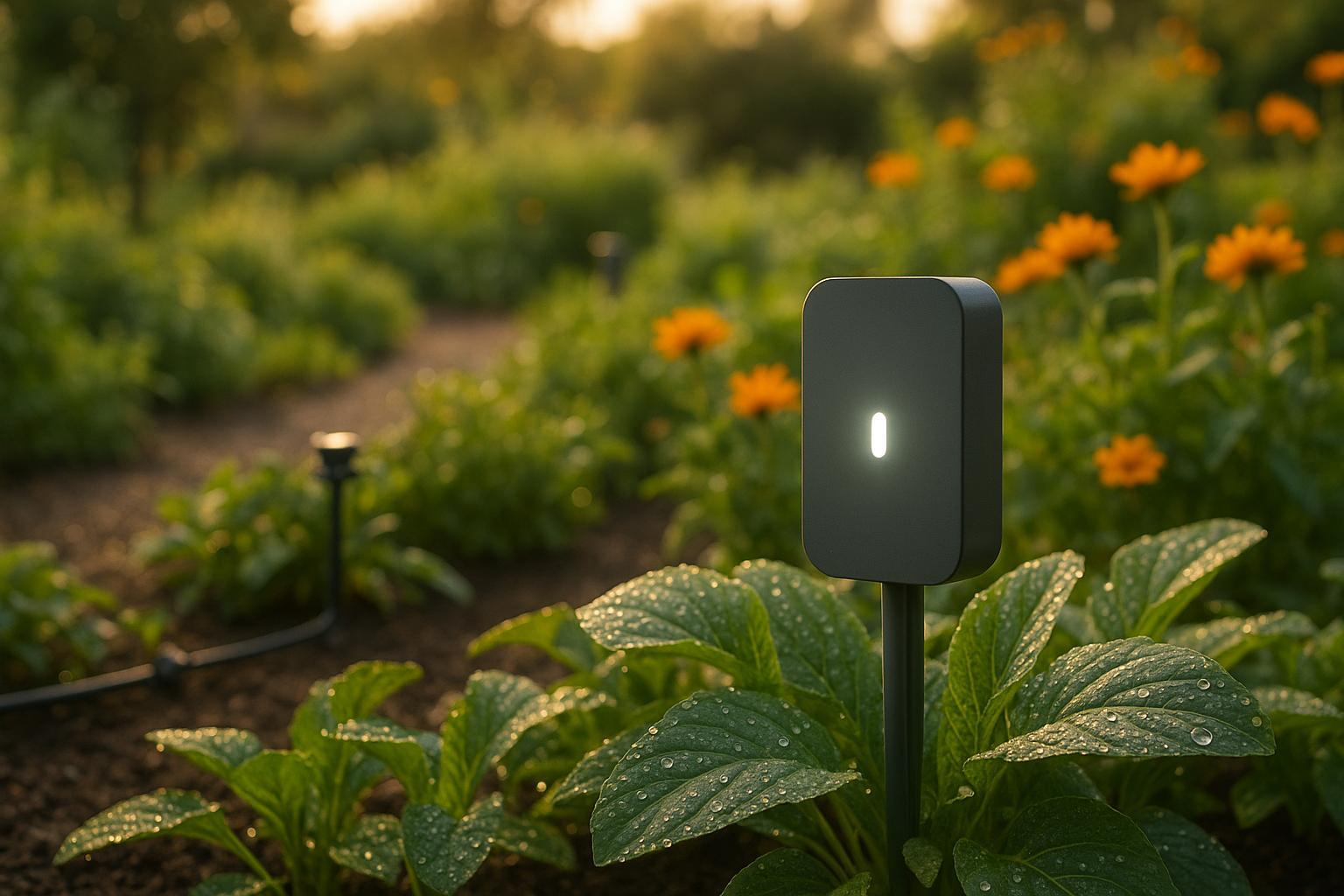
AI Sensor Fault Detection for Gardens
Explore how AI-driven sensor fault detection enhances garden management by ensuring accurate data for pest control and irrigation.
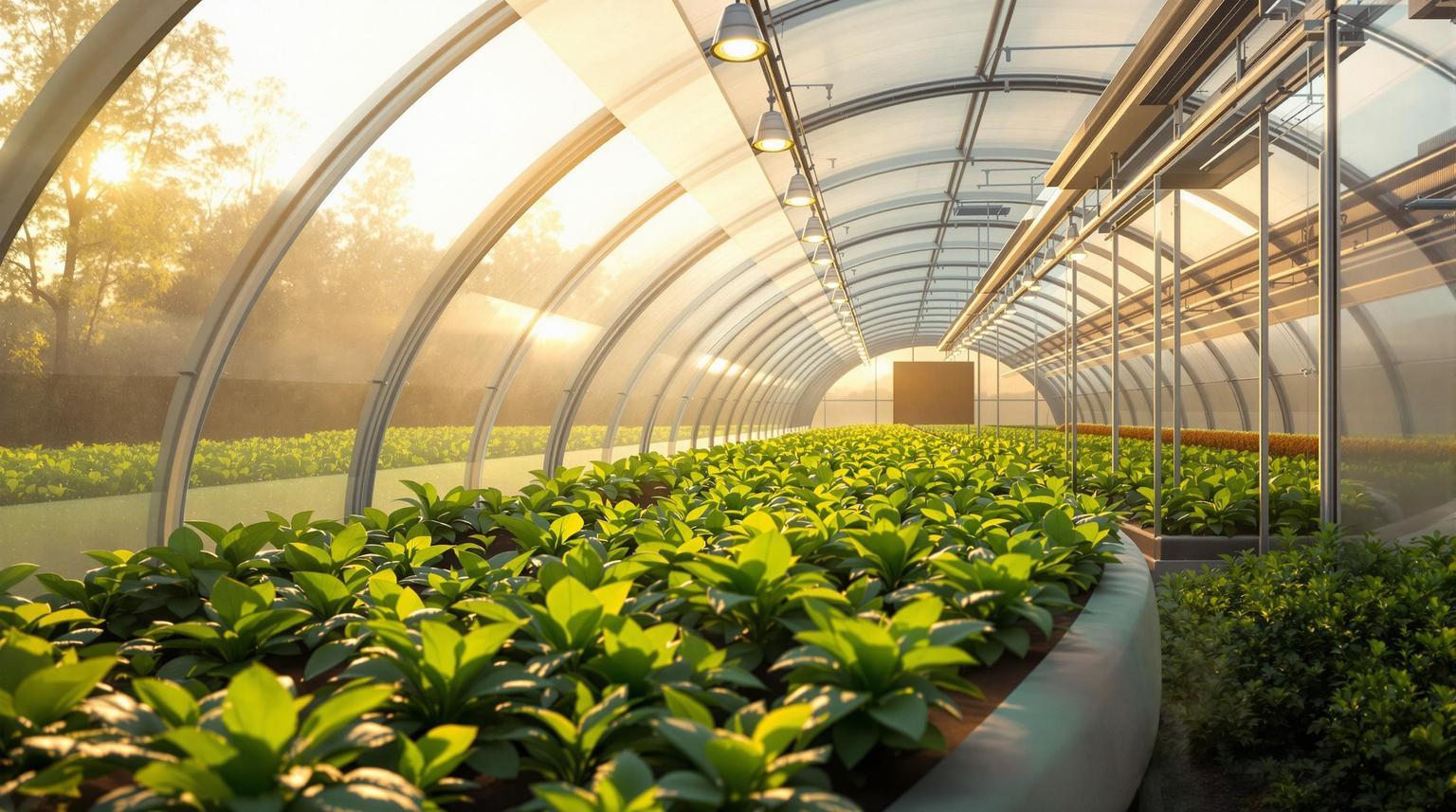
AI-Powered Heating For Microclimate Control
Unlock the potential of AI-powered heating systems to optimize plant health and reduce energy costs in gardening and agriculture.
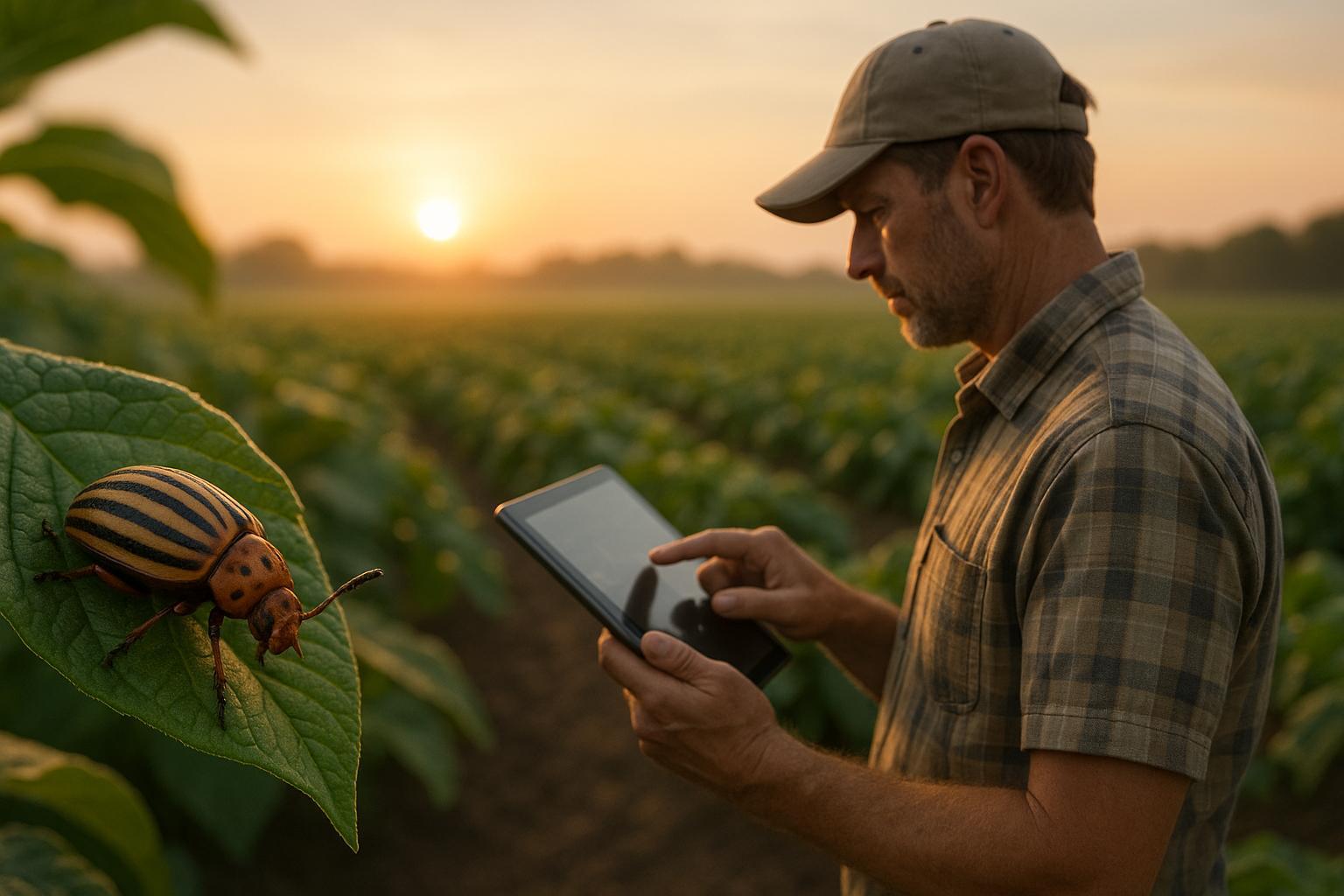
AI Pest Identification vs. Traditional Methods
Explore how AI pest identification outperforms traditional methods by enhancing accuracy, speed, and environmental sustainability in pest management.
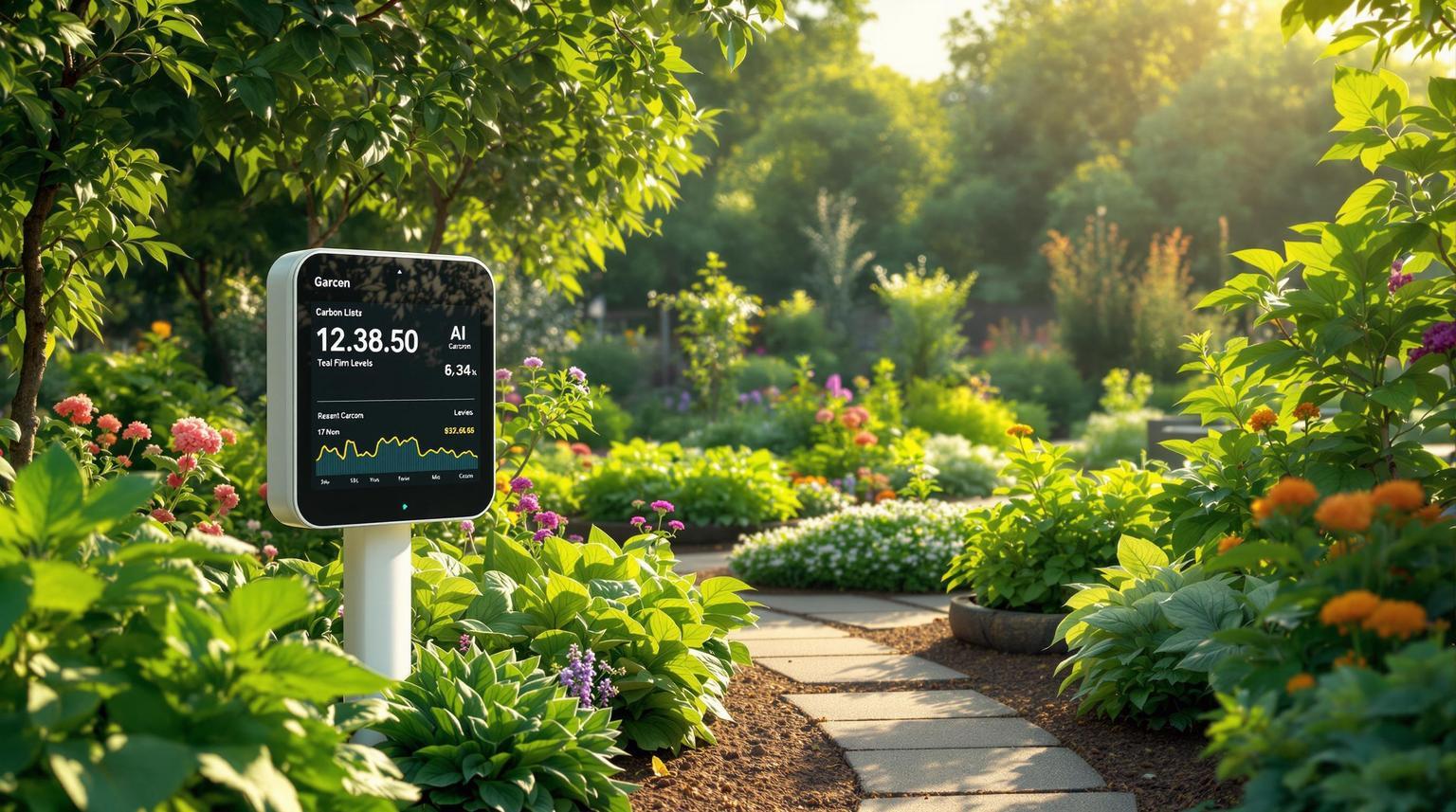
AI Tools for Carbon Sequestration in Gardens
Explore how AI tools can transform your garden into a carbon-sequestering powerhouse with smart plant selection and real-time monitoring.

Can You Use Garden Soil for Grass? Factors to Consider
Explore the differences between garden soil and topsoil, nutrient levels, and pH considerations when using garden soil for grass. Learn the pros and cons along with best practices.
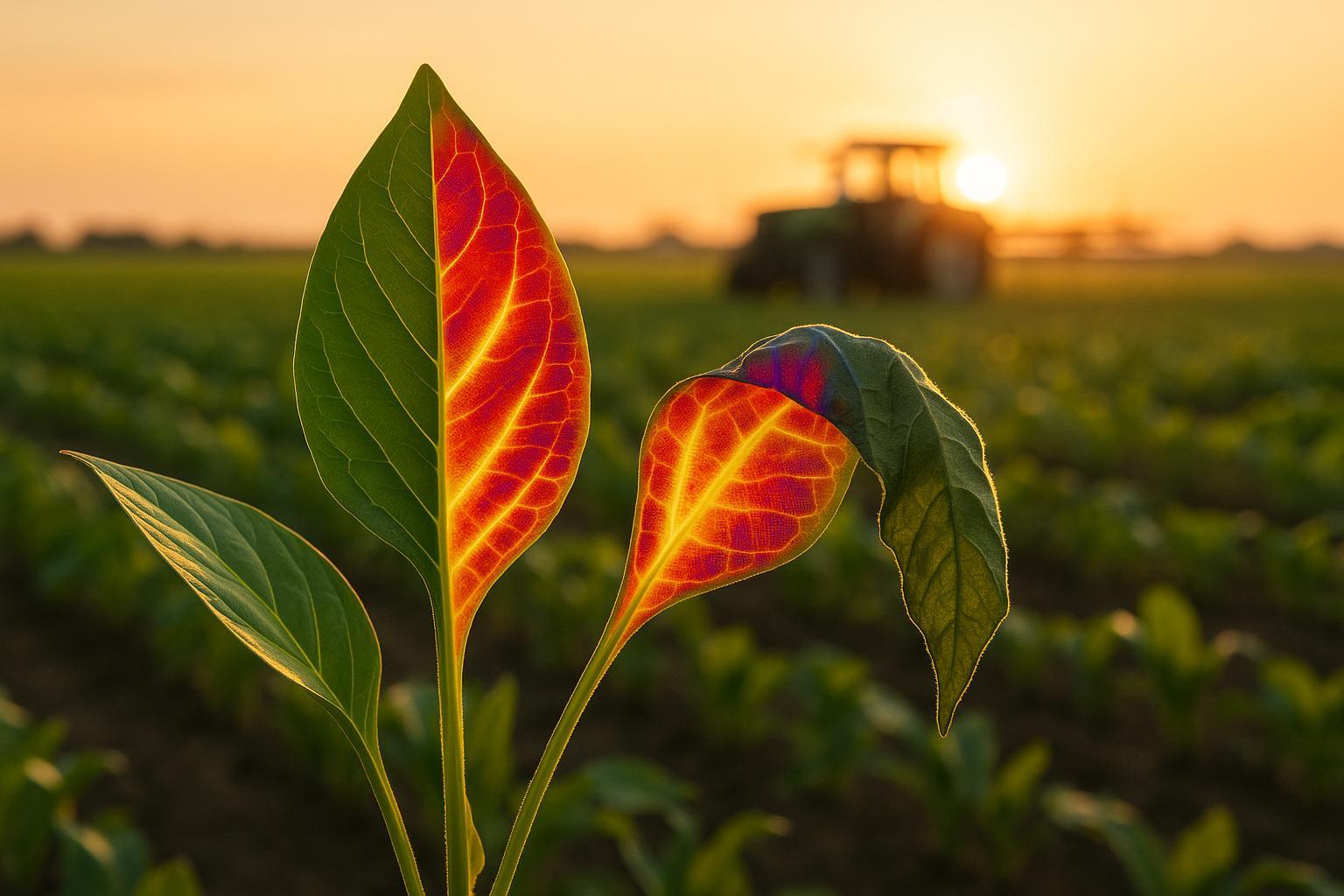
Infrared Imaging for AI Plant Stress Detection
Explore how infrared imaging and AI revolutionize plant stress detection, enabling early interventions and smarter farming practices.